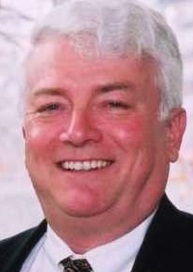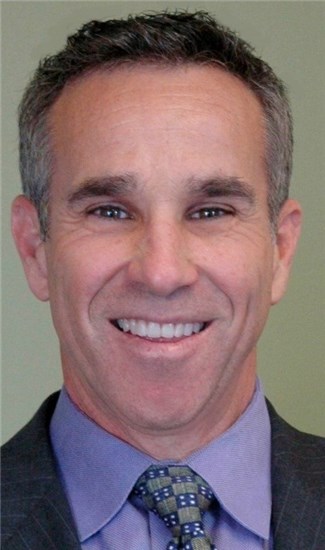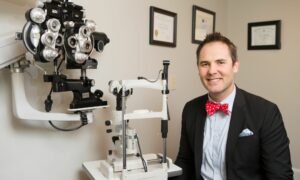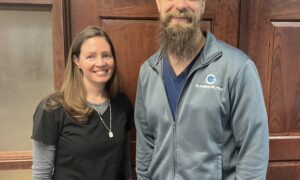By Thomas F. Steiner
 Director of Market Research,
Director of Market Research,
Review of Optometric Business
Third in a series of articles on “Differentiating Your Practice”
SYNOPSIS
Technology advances provide opportunities to improve patient outcomes, whileproviding your practice with specialized revenue streams.
ACTION POINTS
PROJECT A HIGH-TECH IMAGE.Assess the signs, instrumentsand attitudes in your office to make sure you project a high-tech image.
FEATURE HIGH-TECH PRODUCTS. Feature and promote high-tech vision correction options and capture those devices sales in your practice.
EDUCATE PATIENTS ON BENEFITS. CLs have seen remarkable advances, but most patients have yet to hearhow new CLtechnology can benefit them.
Over the past several decades, product improvements have reduced or eliminated many of the traditional deficiencies of vision correction devices. In the eyewear arena, new technology has improved vision, reduced glare and increased comfort. Contact lenses have become safer, more convenient, more comfortable and more predictable. The stream of eyecare product innovation continues to flow unabated.
“Our Patients Expect to See New Products”
Steve Klein, OD
Total Vision Care (TVC) Advanced Optometry
Rancho Bernardo, Calif.
www.tvceye.com
Steve Klein, OD, asks all of his contact lens patients to rate their satisfaction with their lenses on a 1-10 scale, on every visit. “If they don’t rate their contacts at 8 or better, our philosophy is that there are probably other lenses out there for them,” he says. “And if it’s out there, we fit it.”
According to Dr. Klein, a partner at Total Vision Care (TVC) Advanced Optometry, a three-location practice in San Diego County, Calif., “embracing new technology” has been a hallmark of TVC’s operations since the practice opened more than 25 years ago. He says TVC seeks to incorporate new technology in a “strategic way,” whether it means adding a new slit lamp or OCT to the exam suite or agreeing to beta test a new contact lens design, such as the SynergEyes Ultra-Health FC.
“Our mission statement is: ‘Preserve vision throughout life and enhance the vision experience,’” he says. “If a new technology can preserve vision through earlier diagnosis and treatment or enhance vision, such as with new contact lens designs, we bring it into the practice.”
Dr. Klein believes this approach kept TVC’s finances stable during the most recent economic recession and has helped grow profits during the ongoing recovery. Recently, the practice saw revenue growth thanks to an uptick in contact lens referrals for post-operative cataract and post-surgical patients requiring enhanced correction.
“Our patients expect to see new products every time they come in, and we strive to deliver on that,” Dr. Klein notes. “Patients come in more frequently for exams, as a result, because they are excited to try new products, and we have found that patients are willing to pay more for technology they can’t find elsewhere. It’s been a winning strategy for us.”
For ECPs, new technology opens doors to success. Many new vision devices have the potential to improve patients’ quality of life. As such, they can enhance patient satisfaction and the reputation of a practice. Happier patients have fewer complaints, are more loyal and are much more likely to refer others to the practice. New products often command premium prices, particularly in the early stages of their life cycles. Astute ECPs leverage the lower price elasticity of demand for new products to improve practice profitability.
Optometric consultants note that a common trait of the most financially successful practices is that they consciously pursue a strategy of continuous innovation. They constantly challenge existing business processes, seeking greater efficiency and effectiveness. They avoid the natural human tendency to remain self-satisfied in a comfort zone of the tried-and-true. High tech practices are the first to adopt promising new technology, even at the risk of disrupting a current workable office process.
Patients favor high-tech medical offices
Technology adoption is one of the highly visible characteristics that patients assess as they evaluate any medical practice. Patients expect their doctors to be up-to-date and to offer the most advanced treatment options.
Astute ECPs make a conscious effort to communicate their technological expertise to patients by managing the sights and sounds patients experience as they visit the office. Here are some of the things that high tech practices do to create a favorable impression:
Elements that create a high-tech impression
• Potential product upgrades are discussed during every office visit
• Feature advanced technology products that are not found in most offices.
• Presentation of new product benefits are related directly to patients’ medical diagnoses
• New instrumentation is constantly being installed and is explained during exams
• Office newsletters, brochures and social media posts educate about new products and diagnostic technology
• Doctor and staff personally use new vision products
• Office uses EHR
• Office computer and telephone systems are state-of-art
• Digital technology used to educate patients about diagnoses, treatment plans, risks, compliance
Other things that occur or do not occur during patient interactions diminish perceptions of technology expertise:
Elements that create a low-tech impression
• If a patient has no complaint about their current vision device, no new solution is proposed during an exam visit
• Office signals that it is not primarily interested in selling vision devices
• Little effort to merchandise products
• Infrequent presentation of new product options
• Doctor never discusses products with patients
• Staff unable to answer patient questions about new products
• No marketing of new products
• The office appears most interested in keeping patient outlays low and providing what insurance covers
• Instruments appear old, worn, discolored, out of repair
• Staff does not explain purpose of tests or findings with patients
• Office paperwork is inefficient; most paperwork done by hand
• Practice website is very basic and outdated
Contact lens dispensing affects patients’ technology perception
Over the past 40 years, technological advance in contact lenses has been particularly rapid. Even though most patients do not understand the details of how contact lens technology is improving, they continue to be willing to increase their outlays for new lenses that enhance their daily lives.
Practices that routinely propose new and better contact lens technology to patients, even those without current complaints, enhance their technology reputation. Practices that demonstrate a willingness to find a contact lens solution perfectly matched to a patient’s unique, individual requirements, no matter how difficult to satisfy, are most likely to be thought of as technology leaders.
Dispensing products such as those offered by SynergEyes, notofferedby commercial providers, is a powerful communicator of a practice’s technology orientation. Such products command premium fees, offering fair compensation for the amount of time required to fit them.These practices go beyond providing eyecare that satisfies; they raise expectations of visual performance and deliver on it.
Thomas F. Steiner, Director of Market Research for ROB, has spent more than 25 years helping eyecare practices succeed, including pioneering the introduction of color contact lenses into optometry. To contact him: tnlsteiner@comcast.net



























